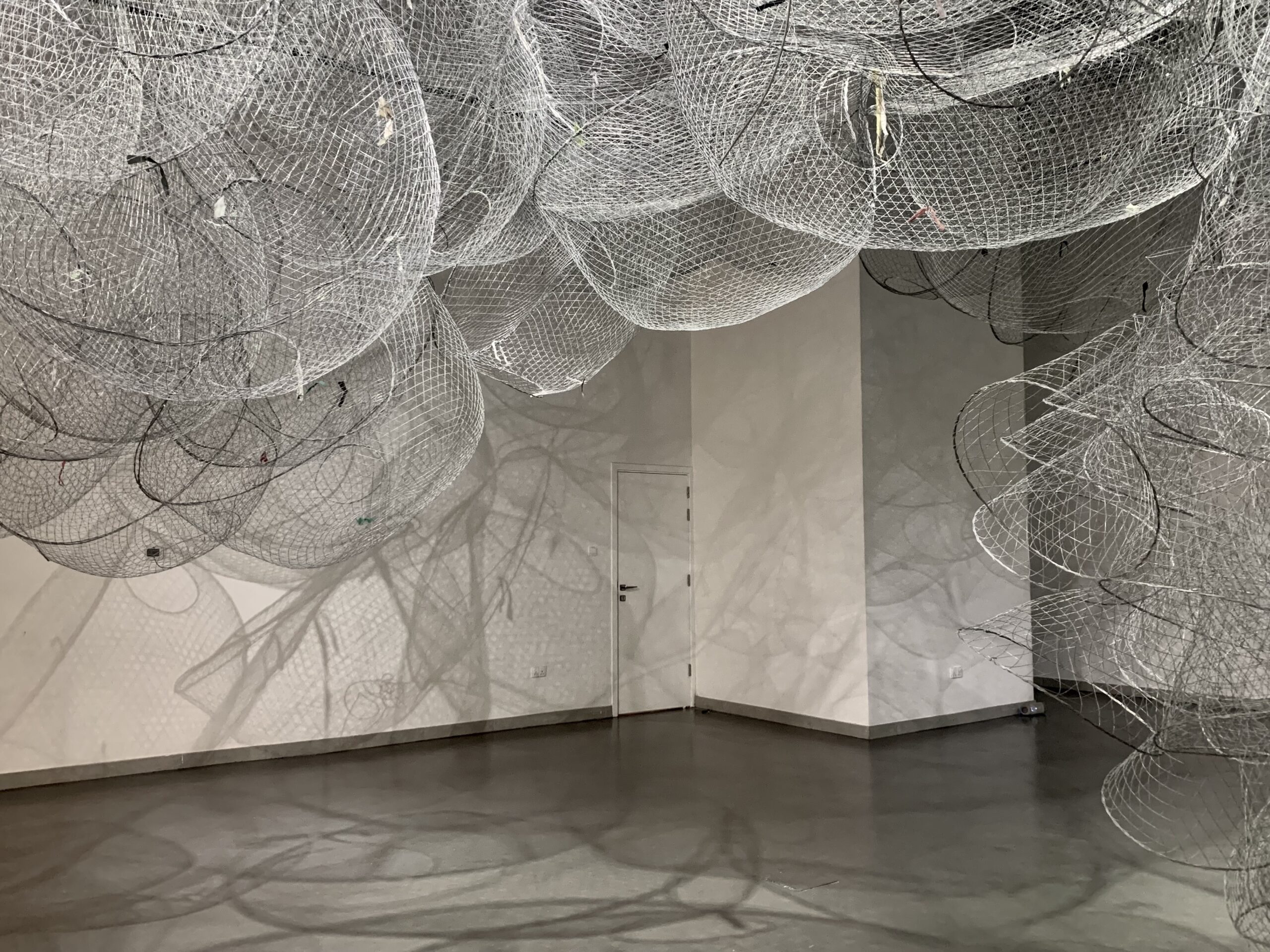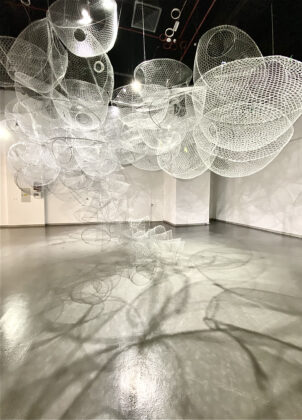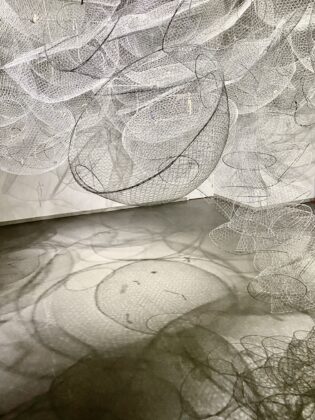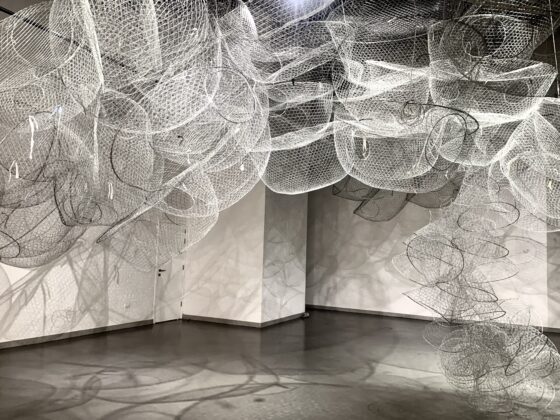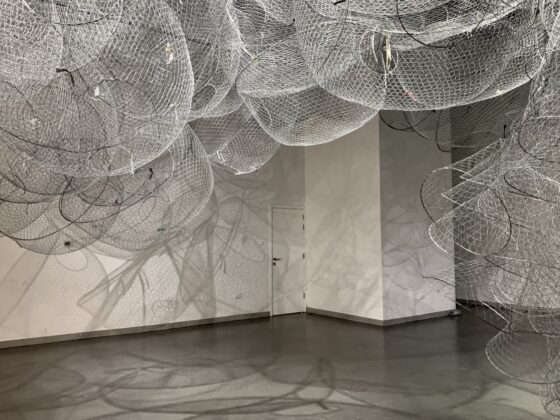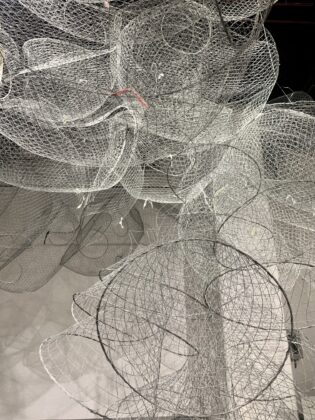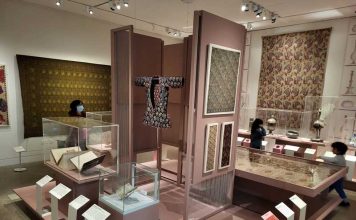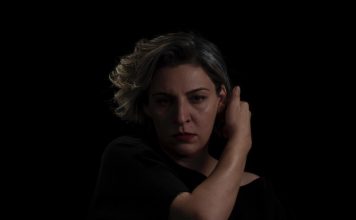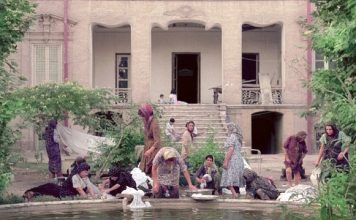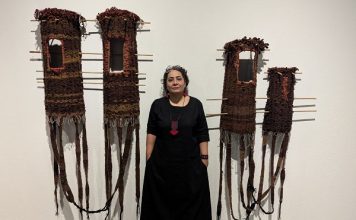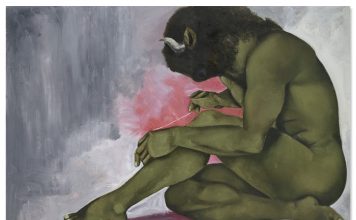By Rawaa Talass
The Iranian-born artist Shaqayeq Arabi has changed countries and continents a few times in her lifetime. Born in 1974, she has lived in Tehran, New York, Paris, and Dubai, her home for the past two decades.
In her art, she often uses found and recycled objects to engage in a dialogue with and about nature.
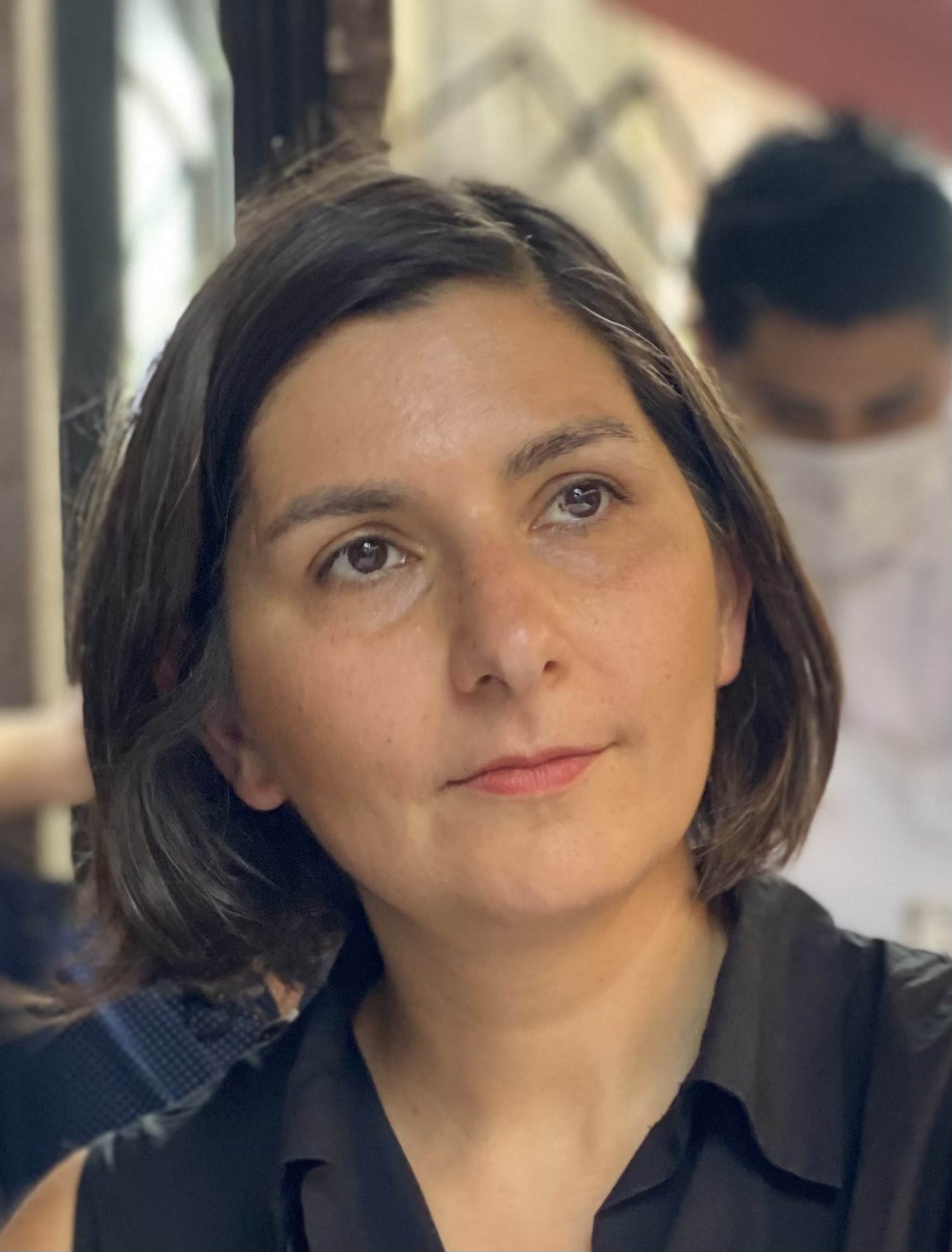
All throughout the summer, Arabi has a site-specific installation on view at the Farjam Foundation inside the Dubai International Financial Center. Titled “The Sea Was Far Away And The Sky Further,” the installation consists of dozens of local fishing traps that are suspended from the ceiling above the visitor’s head.
Arabi joined Kayhan Life for a conversation about her life and her latest creations.
Tell us about growing up in Iran. Were you raised in an artistic environment?
There was certainly creativity flowing in our home, although none of my family members were practicing as artists. The fact that they guided me to start my career at an early age is proof that the appreciation of art was there.
I had my first painting training when I was 12, and from the first session, I had a sense of assurance that this was the place I belonged to. That was confirmed to me on many occasions, even during my university years in Tehran, when I was studying graphic design. I later moved to Paris and continued my art practice while studying fine art at the Sorbonne.
What was it like studying in Paris? Did living in such a renowned cultural capital enable you to view art differently?
Certainly, we are influenced and shaped and reshaped by our experiences. As an artist, everything I have ever seen, heard, or smelled has been influencing my art. My outcome is a reflection of my life: who I am, where I come from.
Paris was definitely a major step forward — immersing myself in a city entwined with art, and viewing art as part of daily life.
[aesop_image img=”https://kayhanlife.com/wp-content/uploads/2022/06/IMG_4469-scaled.jpg” panorama=”off” credit=” KL./” align=”center” lightbox=”on” captionsrc=”custom” captionposition=”left” revealfx=”off” overlay_revealfx=”off”]
What are some main themes that you explore in your work?
I’m interested in working with found opportunities: whether it be found space, raw materials, or objects. I enjoy the freedom to take on a broader and more experimental approach to space and materials. Working with the found object is my immediate connection with the specific locality I’m in, whether in urban and city environments, or in nature.
It’s also a question of practicality, since we have been so often on the move from one location to another, from the city to the countryside. This slowly integrated my practice, and even defined my perception of life.
Transforming these materials into something new, a new life reborn within my work, yet retaining something of their original identity relates to the cycle of life – birth, death, and rebirth.
Your art often interacts with nature. How did the interest in this subject come about, and is it linked with the fact that we are living in ecologically oriented times?
Living in large cities always makes me feel the urge to reconnect with nature. There are twigs, branches, and leaves in many of my works, offsetting my urban life. They are also a reference to environmental issues: what is happening around us, the spices which are going to be extinct, the connections which are going to be lost, the experiences which are going to be unknown, like playing in a tree’s shade in a garden in Tehran.
What was the inspiration behind your newest installation show, “The Sea Was Far Away And The Sky Further”?
It’s about the connection with the locality of Dubai: the sea, its culture, its people, its tradition. The inspiration came while revisiting the fishing ports, where the dhows are docked for fuel, food and water, with a huge pile of skillfully arranged fishing traps “gharaghir” — getting ready for a journey that sometimes lasts for days, far, far away, where there is nothing other than sea and sky.
The installation feels like an experience, with the lighting, the shadows, and the soundtrack in the background. What do you hope visitors will take from it?
To be immersed in the installation with all of their senses. The soundscape is intended to add another dimension and enhance that experience and disconnect you from the world outside.

